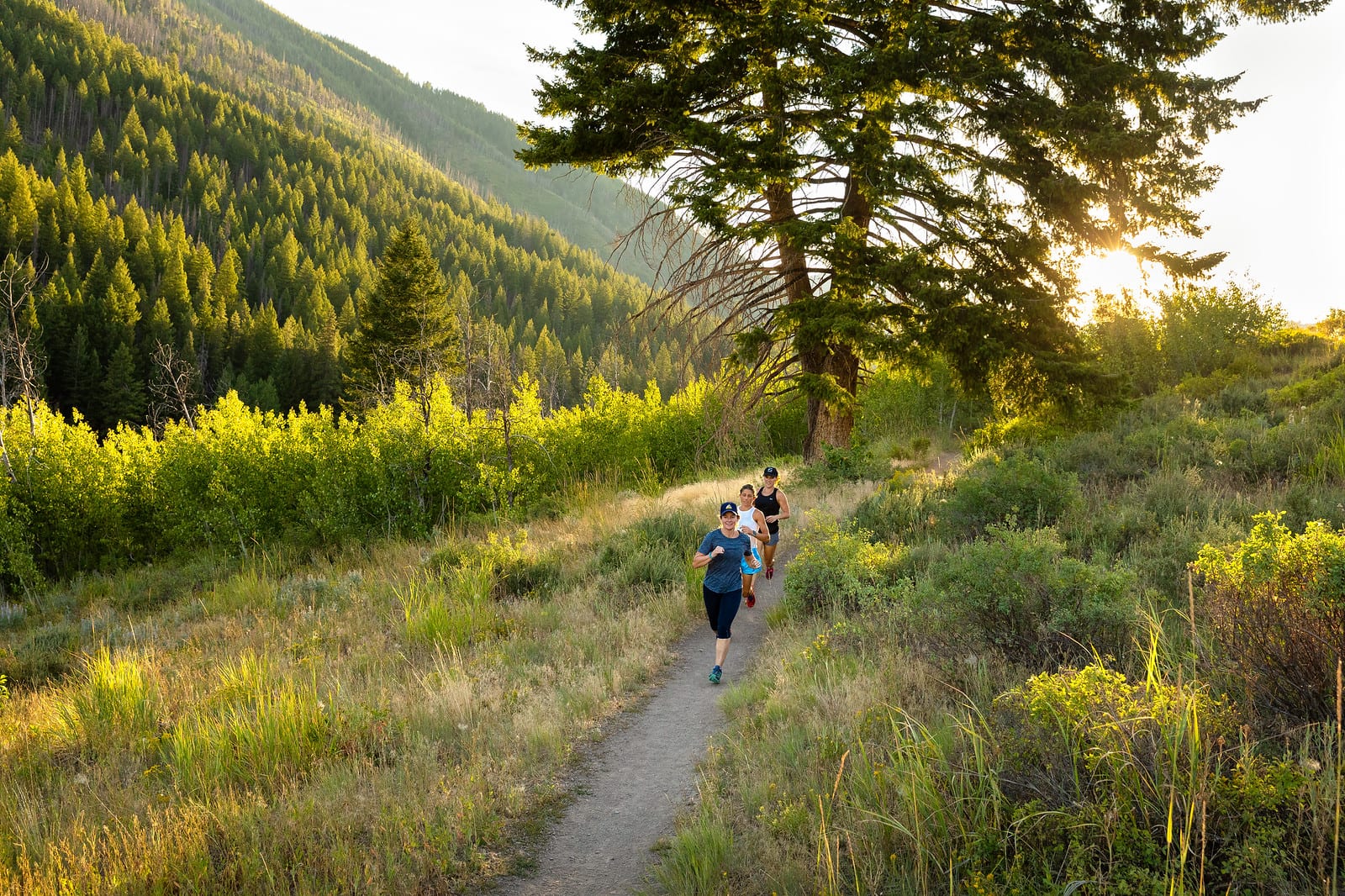Exercising in extreme heat: How to work out safely when the temperatures soar
By Stacy Whitman
With a heat advisory in effect for the Wood River Valley this week—and elevated temperatures expected to last for 10 days or more—the dog days of summer are officially here. But your outdoor workouts don’t have to go by the wayside. With some simple changes to your routine, you can continue to enjoy hiking, biking, and other fresh-air activities.
Hot weather puts added stress on your body and can cause your core temperature to spike. When the mercury rises to 85 or 90 degrees, your performance isn’t the only thing to suffer. If you aren’t careful, you could end up with heat exhaustion or life-threatening heat stroke.
Follow these strategies to lower your risk and keep your fitness goals intact:
Time it right
If you’ve never been a morning exerciser, now’s a great time to give it a shot. Plan outdoor workouts for before 9 a.m., if possible. As a bonus, exercising in the early morning can help you stay energized throughout the day and sleep better at night.
The worst time to exercise outdoors during a heat wave? Late afternoon. In areas such as ours where daylight savings time is observed, 4 to 5:30 p.m. is usually the hottest part of the day. While the sun is at the highest point in the sky around noon, the air temperature continues to climb for several hours afterward. This delay, known as a “thermal response,” happens because the heat building on the earth’s surface is higher than that which can be radiated away.
Find some shade
Seek out tree cover to shield you from the sun. The air temperature that you see on the weather report is measured in the shade. Solar radiation on your clothing and skin can make it feel much hotter, especially at high altitude, and increase the chances of overheating.
The air beneath trees also can be cooler thanks to a process called “transpiration cooling.” As trees release water into the atmosphere through their leaves (a process called “transpiration”), it has a cooling effect on the surrounding air.
Hydrate, hydrate, hydrate
Whether it’s water, a sports drink or both, consuming plenty of fluids before, during and after exercise is imperative, but even more so in hot weather. Exactly how much you need depends on numerous factors, including how long and hard you work out, how much you sweat, and air temperature and humidity.
Water is an essential part of your body’s internal cooling system. When you get dehydrated, your body can struggle to regulate its core temperature, increasing the chances that you’ll develop heat exhaustion or worse. Dehydration, even at low levels, also can decrease blood plasma volume, placing a strain on your cardiovascular system too.
While dehydration can happen anywhere, exercising at high altitude (5,000 feet or higher) puts you at even greater risk. Because humidity levels are low at high elevation, sweat evaporates quickly. What’s more, lower oxygen levels cause you to breathe faster and harder, so you lose more water through respiration. You also may urinate more and not feel as thirsty, so you don’t consume as many fluids as you should.
Starting your workout well hydrated is one of the best ways to ensure good performance and fend off heat illness. About 2 to 3 hours before exercising, aim to drink 17 to 20 ounces of water or an electrolyte drink—or possibly even more. Since many factors are involved, it’s hard to say how much you need to consume, so check your urine. If it’s clear and plentiful, your fluid levels should be about right.
Lower your intensity
Reduce the intensity of your workouts at least initially, then begin to build back up as your body begins to acclimate. Heat acclimatization is a complex series of adaptations that allow the body to better cope with heat stress, but the process generally takes one to two weeks or daily exposure. If you’re in great aerobic shape, it may take less time.
Un-dress for the weather
Expose as much skin as possible to provide more surface area for sweat evaporation—i.e., cooling—to occur. What little clothing you do wear should be lightweight, loose-fitting, brightly colored, and moisture-wicking.
Break it up
If the heat makes it challenging to complete your regular workout, try breaking it up into shorter sessions throughout the day. Giving yourself time to cool down and re-hydrate will help you get back out there and have a successful training session later.
Start with a cool-down
A 2006 study found that immersing yourself in a cold water or pre-cooling leg muscles with ice packs before a sprint cycling workout helped minimize heat strain when cycling in the heat. Alternatively, you could try taking a cold shower and leaving your hair wet to help you stay cool.
Hit the pool
Try swimming laps or an aquatic class such as Deep Water Hydrofit or Blade Runner/Hydrofit for a change of pace. You’ll stay cool while challenging your muscles and cardiovascular system in new ways.
Know your limits
If you do choose to exercise outside, be sure to listen to your body and watch for these signs of heat illness:
- rapid heart rate
- very rapid breathing
- heavy sweating, sometimes followed by a decrease in sweating
- confusion, dizziness or disorientation
- pale skin
- extreme thirst and dehydration.
If you feel these symptoms coming on, take a break and cool down immediately. Try moving to a shaded or air-conditioned location, drinking a cold beverage, sitting in front of a fan, using cold compresses, or taking in a cool shower. If symptoms persist for more than an hour despite efforts to lower your body temperature, seek medical attention.
Resources:
Considerations for Exercising in the Heat (American Council on Exercise)
Fit Facts: Beat the Heat Before it Beats You (American Council on Exercise)
Exercising in Hot and Cold Environments (ACSM)
